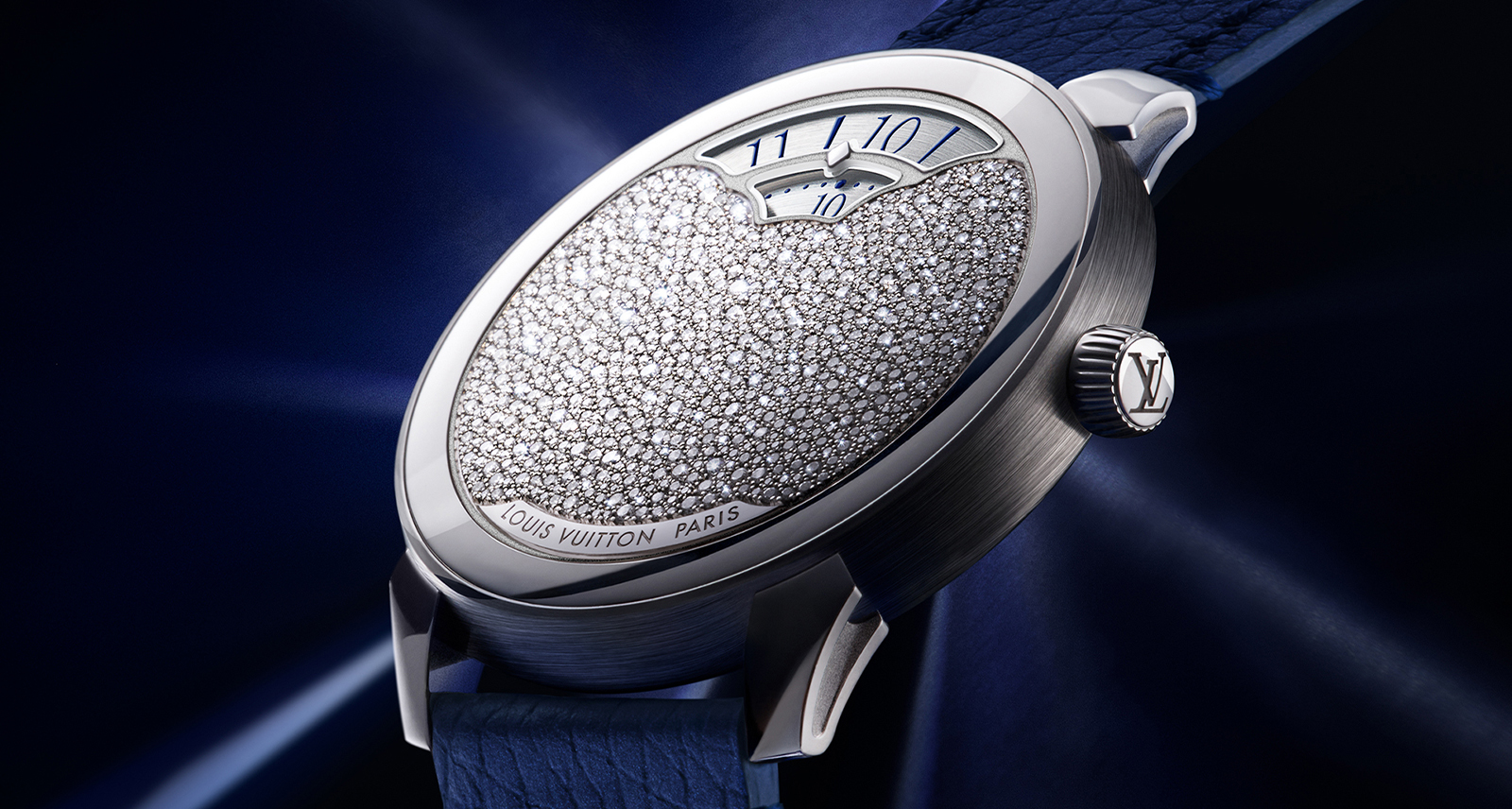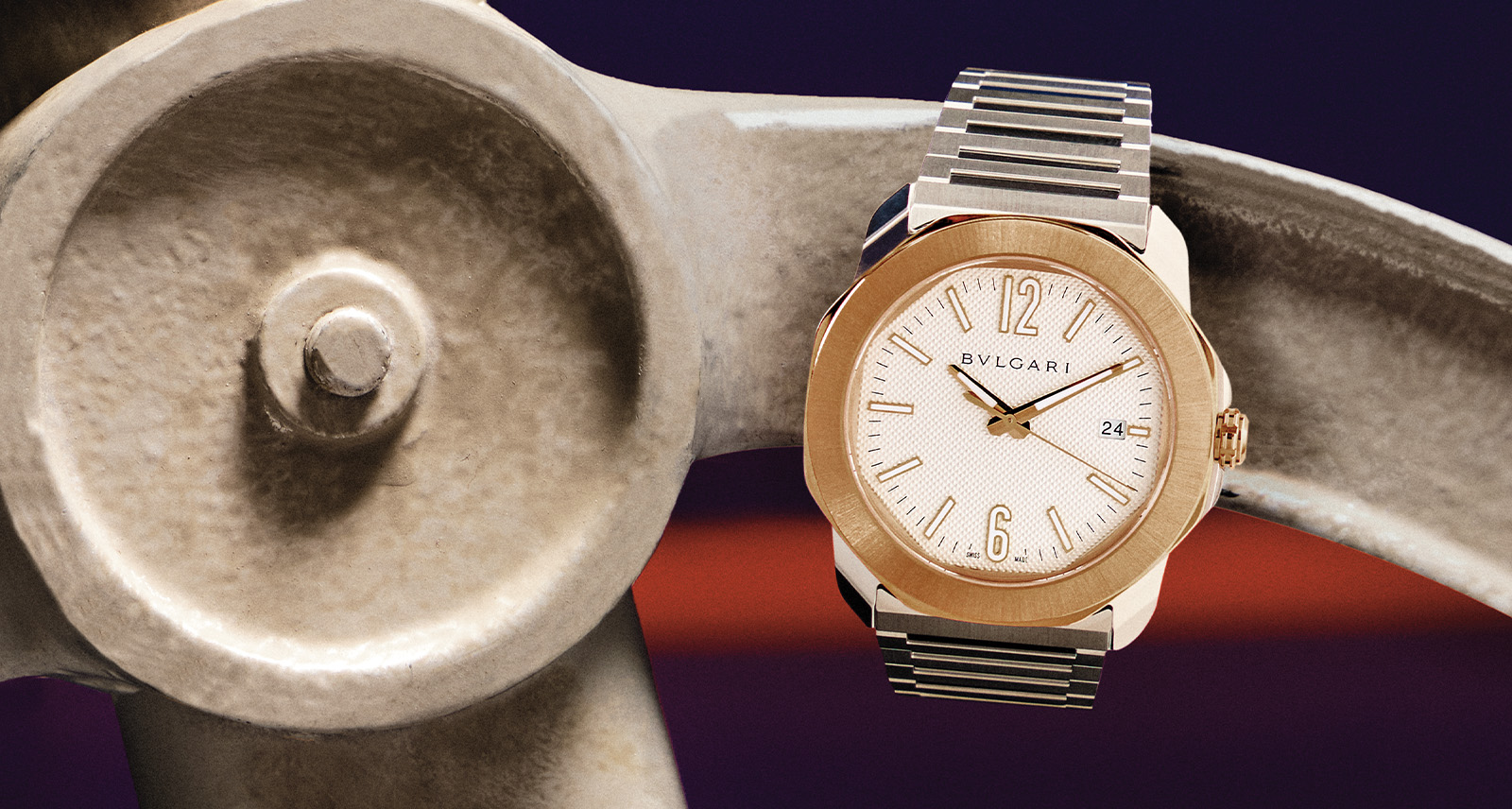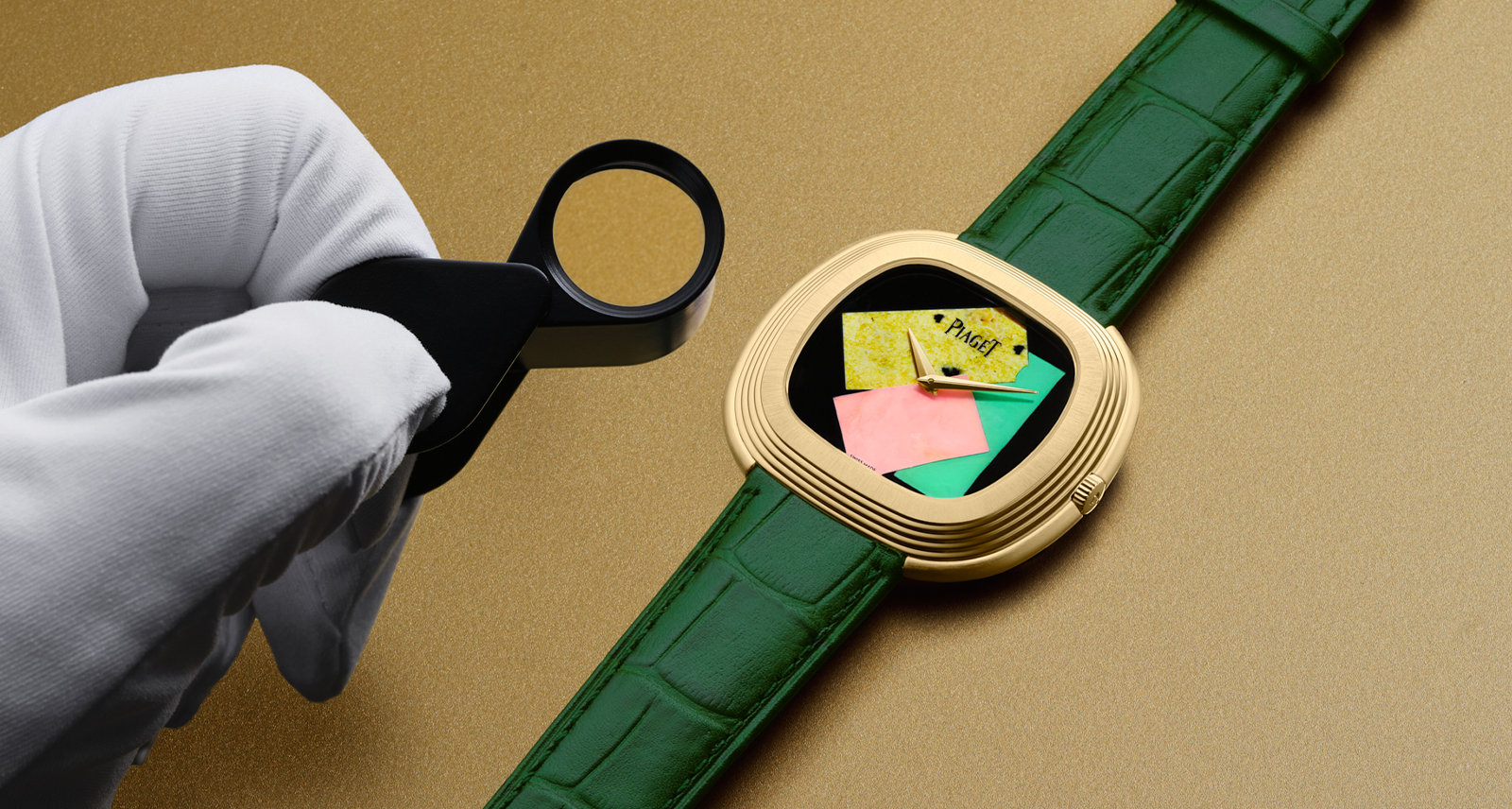In 1859, when Louis Vuitton outgrew his first Paris atelier, he decamped to the neighbouring town of Asnières. In these rural surroundings a few miles from the capital, he built a stucco cottage and a modern, iron-and-glass workshop that would become the centre of operations for his growing trunk-making business. When his son Georges inherited the property in 1892, he expanded the residence with a large addition whose ornate columns, stained-glass windows, and plaster floral motifs embodied the art nouveau style of the day. The home, since restored to its original fin de siècle glory, now serves as a museum and a spiritual anchor for the brand’s ever-expanding global empire. When Michel Navas and Enrico Barbasini, the master watchmakers behind Louis Vuitton’s Swiss watchmaking workshop, La Fabrique du Temps, set out in search of inspiration for a new Tambour model, they found it in Asnières. The new Louis Vuitton Tambour Convergence is the result, and it pays homage to Louis Vuitton’s 19th-century roots while embodying the brand’s transformation into a 21st-century luxury watchmaking powerhouse.
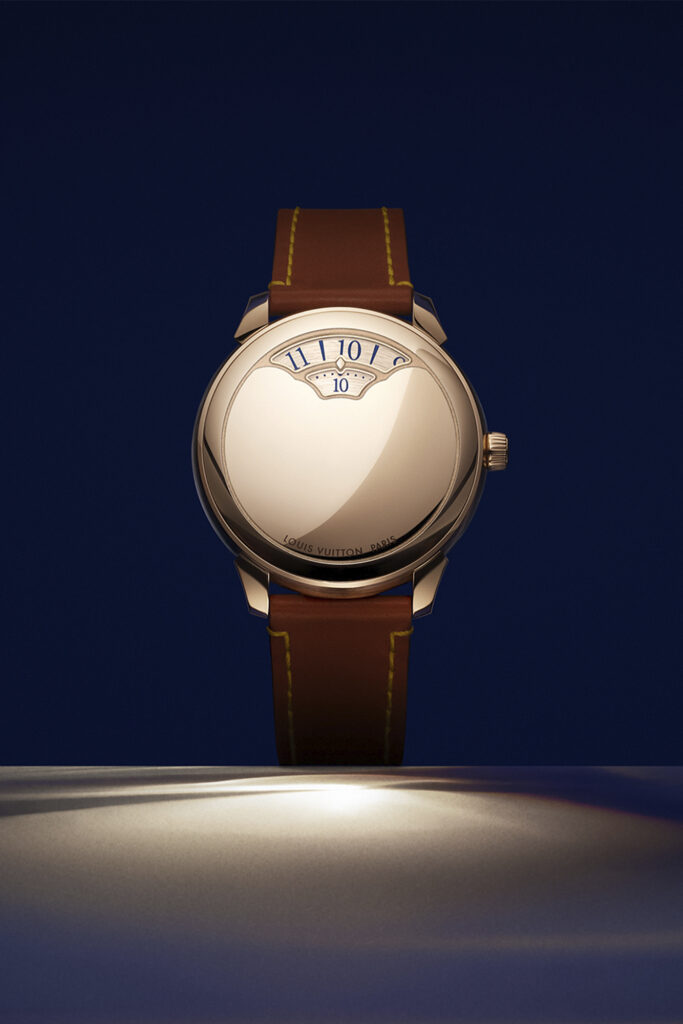

The Tambour Convergence is a guichet, a style of watch popular in the 1920s that displays the time via a pair of rotating discs that are visible through a small window. With a choice of a polished pink gold case or one made from platinum and painstakingly “snow-set” with 795 diamonds, it’s both remarkably subtle and unapologetically decadent. Thanks to a movement made in-house by La Fabrique du Temps, a case crafted by Louis Vuitton’s newly inaugurated La Fabrique des Boîtiers workshop, and finishing provided by the artisans at La Fabrique des Arts, it also represents a confluence of the brand’s full watchmaking might. A convergence, if you will. “This in-house capability allows for a level of creativity and innovation that is unparalleled,” explains Matthieu Hegi, the artistic director of La Fabrique du Temps Louis Vuitton. “It enables us to experiment with new materials, shapes, and functionalities, and it significantly expands our creative possibilities.”
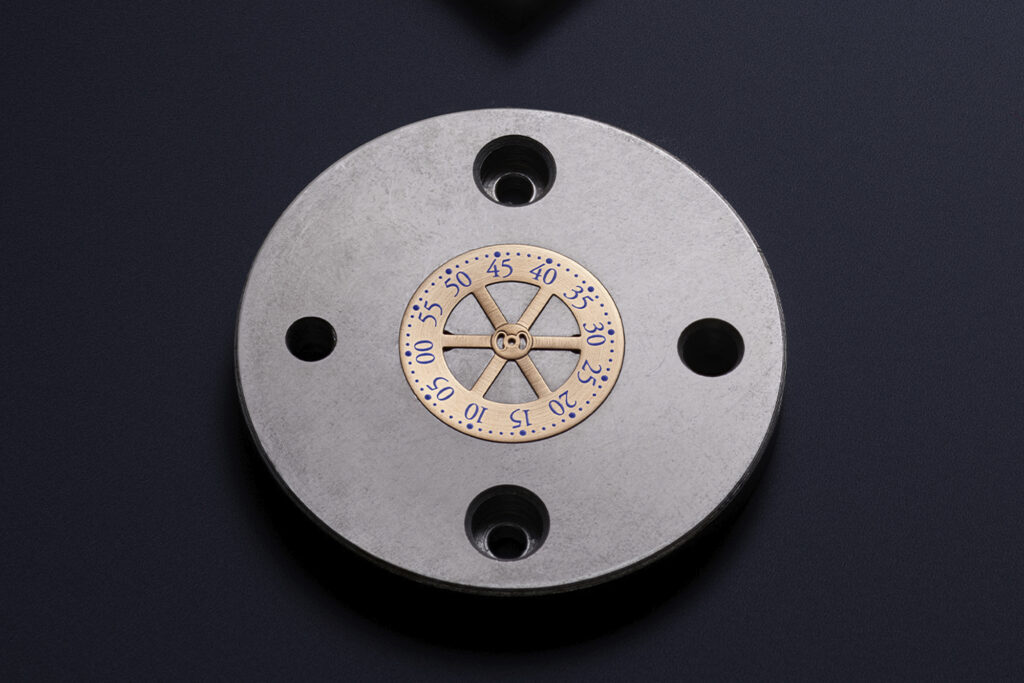

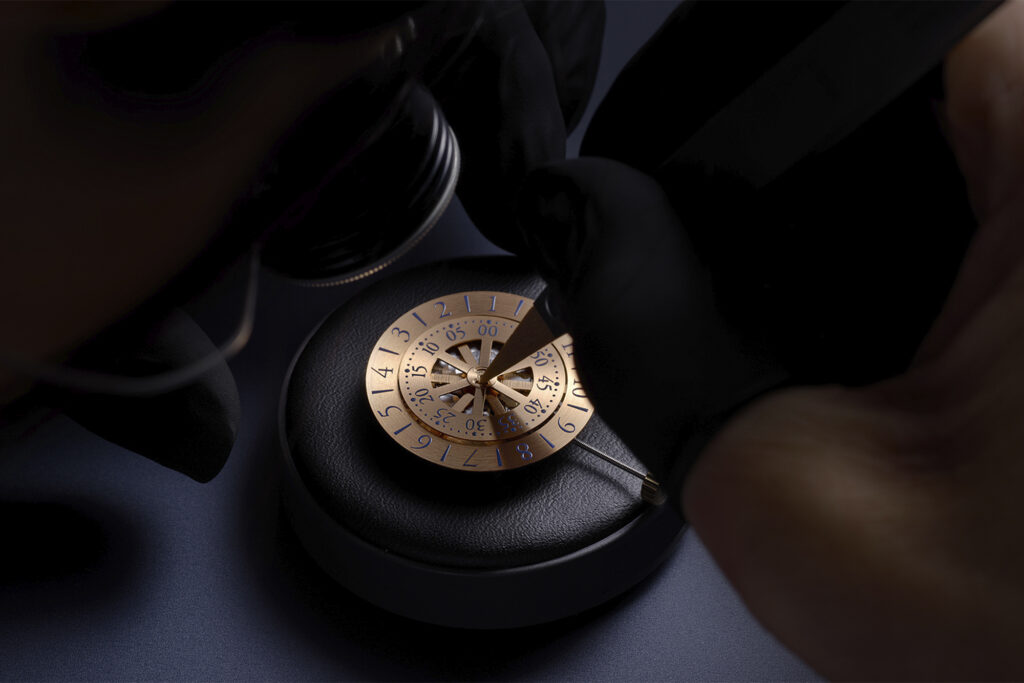
For a brand like Louis Vuitton to create a guichet-style watch like the Convergence requires both a high degree of technical competence and an impressive level of self-assuredness as a watchmaker. The brand first tried its hand at watch design in 1988 with the now-collectible Monterey, but it wasn’t until the launch of the 2002 Tambour that the Parisian maison began to establish itself as a legitimate watch brand. With a drum-shaped case and a brown and yellow colour scheme that evoked Louis Vuitton’s signature canvas motif, the Tambour has since become the foundation from which the brand’s modern watchmaking program has grown. The 2009 Tambour Spin Time, Navas and Barbasini’s first commission for Louis Vuitton, took things to the next level with a face featuring a set of 12 spinning cubes, inspired by the flip-board timetables found at railway stations.
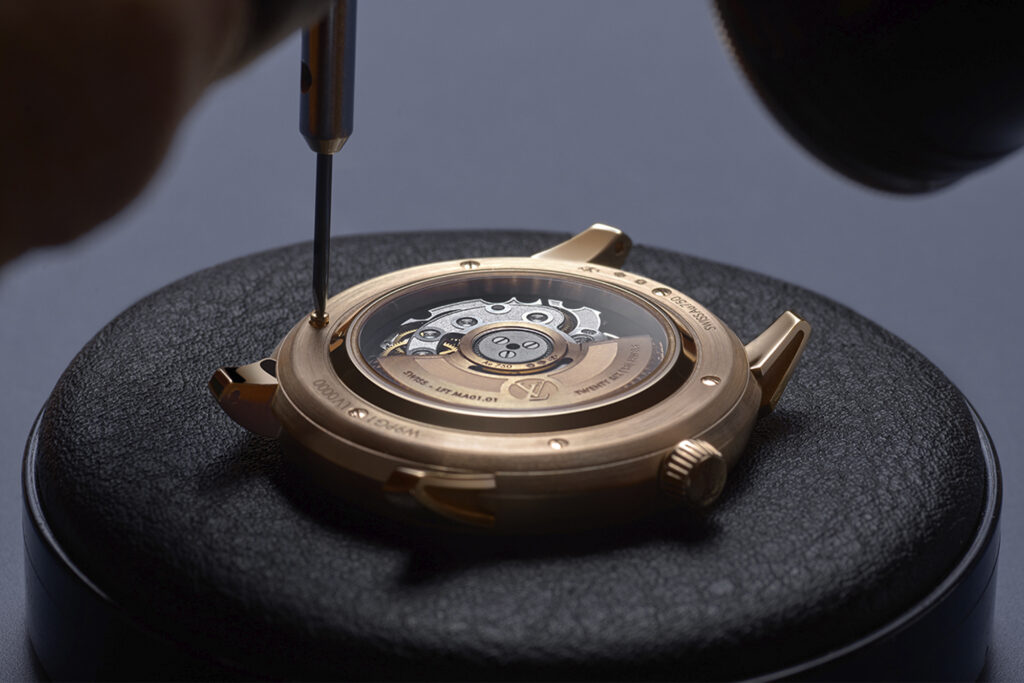



More than 15 years later, and following a full redesign in 2023, the Tambour has grown into a full-fledged collection encompassing four distinct lines, the latest of which is the Convergence. “The genesis of Tambour Convergence is the result of discussions I have constantly with our master watchmakers Michel and Enrico,” Hegi says. In search of a design that could play to the strength of their in-house movement and case-making capabilities while expanding the Tambour’s vernacular, they settled on a “dragging hours” movement whose numerals make a slow, steady arc across the dial.
To provide a contrast to the smooth (or diamond-encrusted) surface of the case, Hegi drew from the same art nouveau traditions as Georges Vuitton. “The shape of the guichet that frames the time indication in the Tambour Convergence is indeed inspired by the decorative arabesques found in the interior architecture of the Louis Vuitton family home,” he says. “This inspiration infuses the design with a sense of beauty and heritage, creating a watch that is both meaningful and aesthetically captivating.”
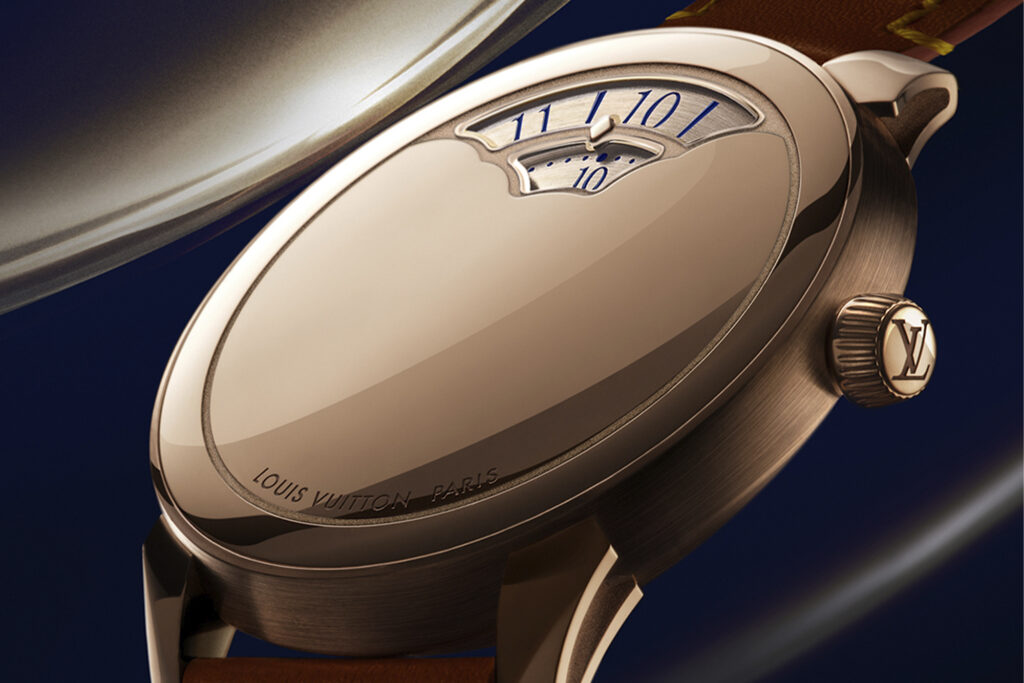
The Convergence, with its wide expanse of hand-polished precious metal, isn’t just a new look for the Tambour, however, it’s also a potential opportunity for Louis Vuitton’s artisans to show off their skill at engraving, enamelling, and miniature painting in future “Métier d’art” versions. “I strongly believe that we started a new chapter with the Tambour Convergence,” Hegi says. “The face offers a playground for all kinds of techniques and, with our artisans at La Fabrique des Arts, it’s also an opportunity to display a lot of creativity, becoming a canvas for our future models in the Tambour Convergence collection.”
When Georges Vuitton built his house more than a century ago, it’s unlikely he would have imagined his small, family-owned luggage making operation would someday grow to encompass a global empire of fashion, accessories, interior design, and high-end watchmaking. In the Tambour Convergence, however, he would almost certainly see something familiar.
